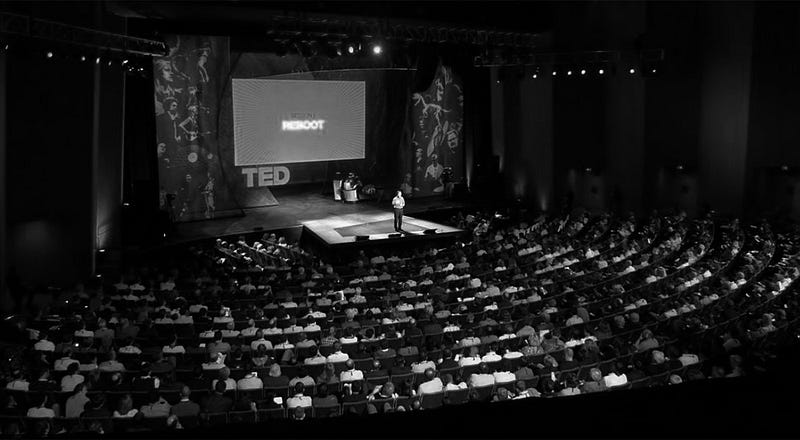這位巴西人講述了他是如何通過學(xué)習(xí)UX從而學(xué)會了英語卖词,甚至最后在美國找到了一份UX的工作聘鳞。
作者認(rèn)為學(xué)英語的關(guān)鍵是培養(yǎng)閱讀的習(xí)慣诡宗,他每天早上花一個小時的時間去看和收集UX的相關(guān)的文章并整理起來,然后每個周六早上花上3個小時回看這一周來收藏的文章瞳步,當(dāng)作復(fù)習(xí)闷哆,并組織語言轉(zhuǎn)化成葡萄牙語(當(dāng)?shù)卣Z)發(fā)表在自己的UX博客上。
第二個就是了解英語的表達(dá)方式谚攒。作者每次遇到不懂的表達(dá)方式阳准,馬上Google,確保自己能了解這個單詞的意思和具體應(yīng)用情景馏臭。
第三個他提到的是要模仿英語發(fā)音和語調(diào)野蝇。閱讀英語只是第一步讼稚,那聽和讀呢,所有的挑戰(zhàn)才隨之而來绕沈。觀看各種UX活動錄像是關(guān)鍵的一點(diǎn)锐想,提升了他的聽力、讀英語的信心乍狐。這里他介紹了一個方法赠摇,找一些有字幕的視頻去看,然后遇到不懂的浅蚪,停下來藕帜,重復(fù)的去讀句子,看起來很苦逼是吧惜傲,但這樣堅持洽故,總沒錯,他提到:it only gets easier with time盗誊,隨著時間的推移时甚,會變得越來越簡單。
隨著作者英語水平的不斷提高哈踱,他開始參加各種以英語為主的UX活動荒适,既能了解到其他UX團(tuán)隊做設(shè)計做到哪種程度,也能認(rèn)識到各種各樣的專業(yè)人才开镣,他慢慢的從中找到了說英語的自信刀诬。
最后他在美國成功的找到了一份UX的工作。
How UX helped me learn English
The challenge of finding UX content available in my native language turned out to be a motivation to learn a new?one.

S?o Paulo, Brazil (photo:Felipe?Borges)
A little background info about me: I was born and raised in S?o Paulo, Brazil, where I lived more than 20 years of my life. In Brazil we all speak Portuguese, everyday and everywhere, and less than 3% of the population speak English fluently.
Brazilians take mandatory English classes in school, but for a number of reasons?—?including a?quite broken national educational system?and the lack of exposure to the language on a regular basis?—?we don’t learn it enough. We think we do; quality standards are so low in certain regions that one can really quickly be considered an advanced student in language schools. But when you move to an English-speaking country and English becomes your primary language, you very soon start to realize how your “5-star”, “advanced proficiency” in English can only get you so far.

Paulista Avenue, S?o Paulo (photo:Marcos?Lamego)
We do get to listen to American music on the radio and watch Hollywood movies somewhat frequently (dubbed on TV, subtitled in theaters). But when you lack grammar, vocabulary, and/or cultural references, it all tends to sound like gibberish or background noise.
And then you get a job in UX.
“Normalmente se tem como base a aniquila??o de alguns requisitos como uso de cores e imagens reais, utilizando-se somente blocos para representar os espa?os e tipos de conteúdo. Quanto mais detalhada a informa??o, melhor a interpreta??o do especialista. Wireframes também podem servir como guia para que os desenvolvedores saibam o posicionamento correto dos objetos.”
The paragraph above is an excerpt from an article, written in Portuguese, about the role of wireframes in the design process. I’m sure you are smart enough to grasp a few words here and there, even without ever been exposed to the language. And there’s a big chance that, if you’re reading this article, you already know what wireframes are used for.
But what if that was the only way you could learn more about a discipline you have a lot of passion for, and very little experience with?
Every single UX blog or website that my mentors would send me (“you should add this one to your Google Reader!”) was written in English. Every. Single.?One.
Back in 2005, when I started working in UX at a big digital agency in Brazil, content available in Portuguese about our discipline was close to zero. Every singleUX blog or websitethat my mentors would send me (“you should add this one to your Google Reader!”) was being written in English.

Aside from the headache that reading and listening to a foreign language for several hours a week brings, it was also a matter of depth: the smarter the writing, the harder it is for a non-native speaker to understand all the subtleties and smart thinking hidden in between the lines.
The lack of fluency in English was holding me back in UX.
And Ihadto do something to change that.
Cultivating a reading?habit
The best way of solving a challenge that is bigger than yourself, is to start. There was no other path, really. Google Reader (sigh) was the best partner I could ask for in that process; blocking my calendar from 8 to 9am every day of the week was another key step to get me where I wanted to.

Every morning I would spend at least one full hour reading all the feeds from the day before, carefully organized in folders: User Experience, Technology, Advertising, Art, and… well, Memes.
I had to be fully immersed in that new language, and that had to include way more than just UX sources.
Every Saturday morning I would spend about three hours looking back at everything I had read the week before, and translating that knowledge into articles that I would publish, in Portuguese, on aUX blogI decided to create to help me in that process. Having a place to document what I was learning was an important piece of the puzzle. When you go through the exercise of retelling a story in your native language, with words that you know exactly how to play with, you force yourself to fully understand the meaning and the intricacies of what you are trying to communicate.
Through that same blog?—?I thought?—?I could help other Brazilian designers along the way that were not as proficient in English.
Understanding expressions
“…and run a?ballpark estimate?to avoid surprises later on…”
“…to set up atouch basewith the team every morning…”
“…make sure you?cover all the bases?in the design process…”
“…be able to handlecurveballsright off the bat…”
It was not just about individual words. When you’re born in?the nation of soccer, reading expressions like the ones above can be disorienting.
It’s what I like to call “Baseball English”. After a couple years living and breathing the American culture, you learn to understand, appreciate, and respect each of these expressions.

So many curve balls, so little vocabulary (photo:Paul?Lim)
The fact is: cultural references are more embedded in our writing than we think. The vast majority of UX articles I was able to find online had been written by designers, authors and thought leaders born and raised in the United States, and it was inevitable to stumble upon references from American books, movies, music, military, history.
Copy, open new tab, quotation mark, paste, quotation mark, enter.
Every time I encountered a new expression I wasn’t familiar with, I would stop the reading, Google it, and derail a bit from the original article?—?to make sure I understood the origins of that particular term.
Learning about UX was a much more nonlinear process than I thought. At the same time, much more exciting than just reading about wireframes.
Ultimately, you’re in a journey of learning about people.
Mimicking pronunciation and intonation

Reading in English was just the first step, most likely the easiest one. What about the content available in talks, podcasts, interviews and YouTube videos? What about listening to and speaking a new language, and all the challenges that come with it?
Through video and audio content I was able to access a whole new aspect of UX that was not available in long-form articles. An intriguing new world was opening up for me.
Watching full recordings of UX conferences and events had a crucial role in building confidence in my listening and speaking skills. How do you pronounce “ecosystem”? What are the expressions people use in spoken vs. written word? What’s the intonation English-speakers use during design critique sessions?
I decided to start with videos that had subtitles or some sort of closed captioning. I would find myself playing and pausing the video several times, repeating after the presenter, until I got the words right.
The way words are pronounced.
The pauses between the sentences.
The air that leaves your mouth with certain consonants; the air that doesn’t.
The intonation when switching topics.
That’s right: fromDan Saffer?toJesse James Garrett, includingJared M. Spool?and?Brad Frost—?they all helped me learn both English and UX. I can’t thank them enough for that.
The good news is: it only gets easier with time.
Meeting native English-speakers
UX conferences and meetups?are not just a great opportunity to learn about what other UX teams are doing and where our discipline is headed; it is also a great place to connect to very talented people with diverse professional and cultural backgrounds.

Photo:des Asuncioner
Once I was feeling more confident about having conversations in English, I started joining UX Conferences in other countries. The few networking experiences I had in the early years of my career were incredibly transformative. I felt confident enough to start having more meaningful conversations with designers all over the world?—?in conferences, video calls or online chats and forums.
Learning UX, for me, was now becoming a two-way experience.
You never stop learning a?language
Fast forward a few years and I got a job offer in the United States. The process of transitioning to a new country, culture and work environment was definitely much more seamless because of those first years of my career immersed in the language.
The truth is: you never stop learning a language. To this day, at least once a week, I hear an expression that is foreign to me. It sounds cliche, but the best advice once you have reached a point where you are confident with your language skills is to continue to be curious.
Don’t be shy about asking silly questions.
If you don’t know how to pronounce a certain word, make that a thing. Make a joke. Make fun of your own accent. Break the ice. Not trying to pretend being a native speaker was one of the best advices I’ve received – thanks to?Felipe Memória?for this one.
It’s all about?passion
The same mechanism applies to other aspects of one’s career. Whether you are trying to be fluent in a new language, learn a new prototyping tool, immerse yourself in a new culture, or just trying to understand your users?—?ultimately it’s all about finding the intersection between your short-term objectives and your long-term passions.
In my case, it also took a lot of organization and persistence.
If you have a similar experience to share, drop me a comment below.
PS: I continue to write in Portuguese,here. It’s the way I found to give back to the UX community some of the things I learned in the process.
Thank you for reading.